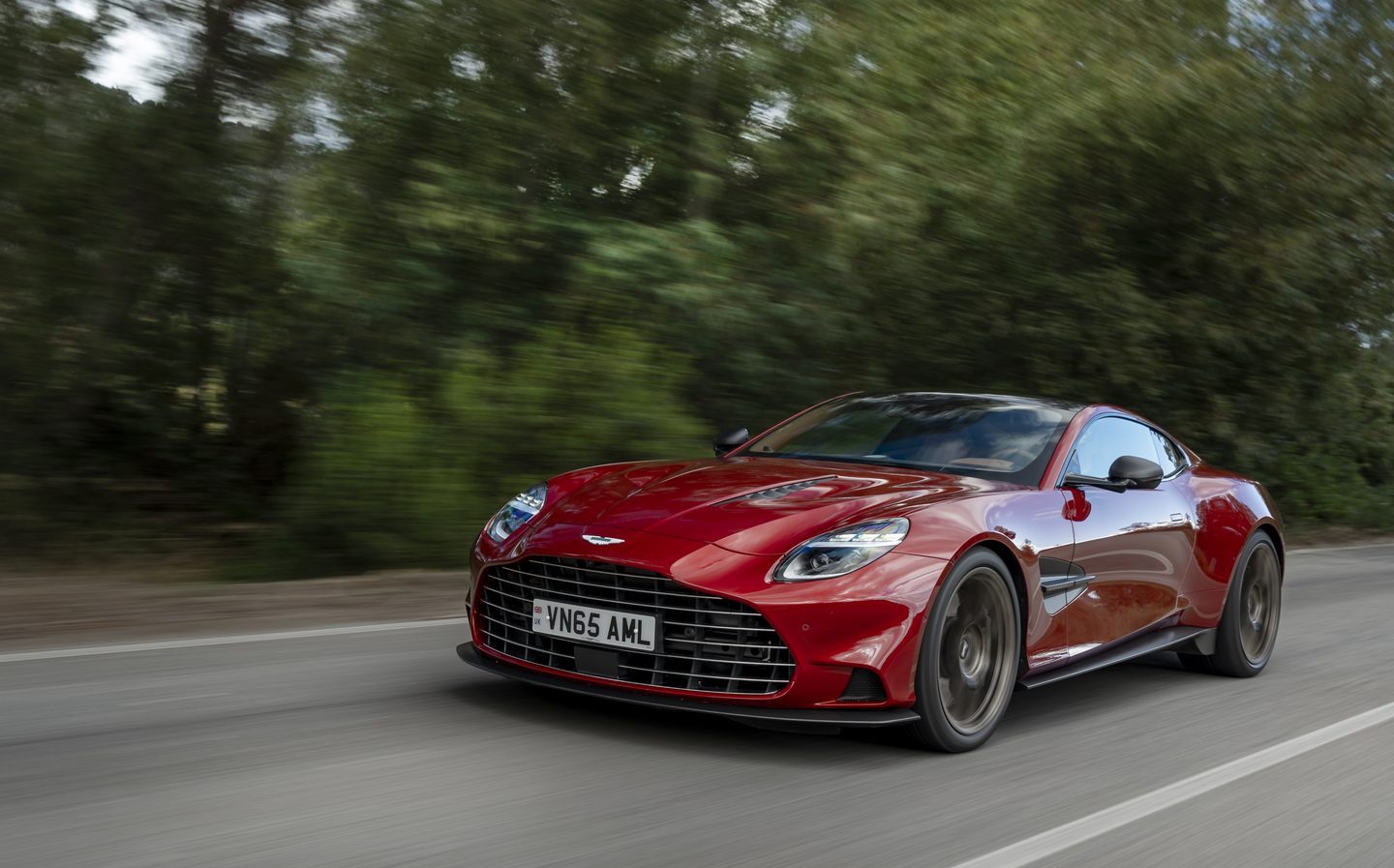Aston Martin Vanquish 2024 review: James Bond would approve of mega-power Aston, but it’s not quite bulletproof
Astonishing
It might seem a little too on-the-nose, or maybe even lazy, to open a review of the new Aston Martin Vanquish by linking to fictional superspy James Bond, but 2024 marks 60 years since the legendary DB5 was first seen on-screen with Sean Connery in Goldfinger.
And it’s not like Aston itself is shy of the association — it has long trumpeted its link-up with the cinematic version of Ian Fleming’s literary creation, to the point it has released a special edition of its grand tourer called the DB12 Goldfinger this year, to mark the 60th anniversary.
However, if 007 — whomsoever the next actor will be to inhabit the role — needed to get across Europe to foil a megalomaniacal plan just in the nick of time, there can be no finer machine for 007 to choose than the latest Vanquish.
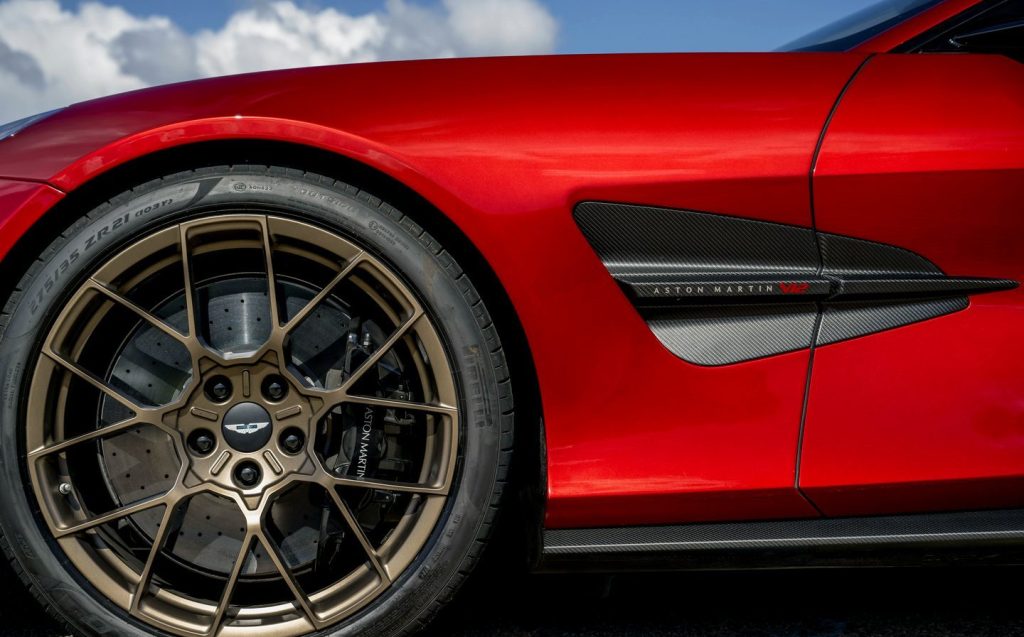
He’s been in one before, of course. Despite the fact the Vanquish nameplate is an entirely 21st century creation, arriving in 2001, it has built up a formidable aura around itself in short order to become something of a legendary machine.
Part of that will have been its appearance in 2002 film Die Another Day, where it was equipped with rocket launchers, spiked tyres and even a cloaking device, and proceeded to do battle with an open-topped Jaguar XKR on a frozen lake. Although the less said about the rest of that film, the better.
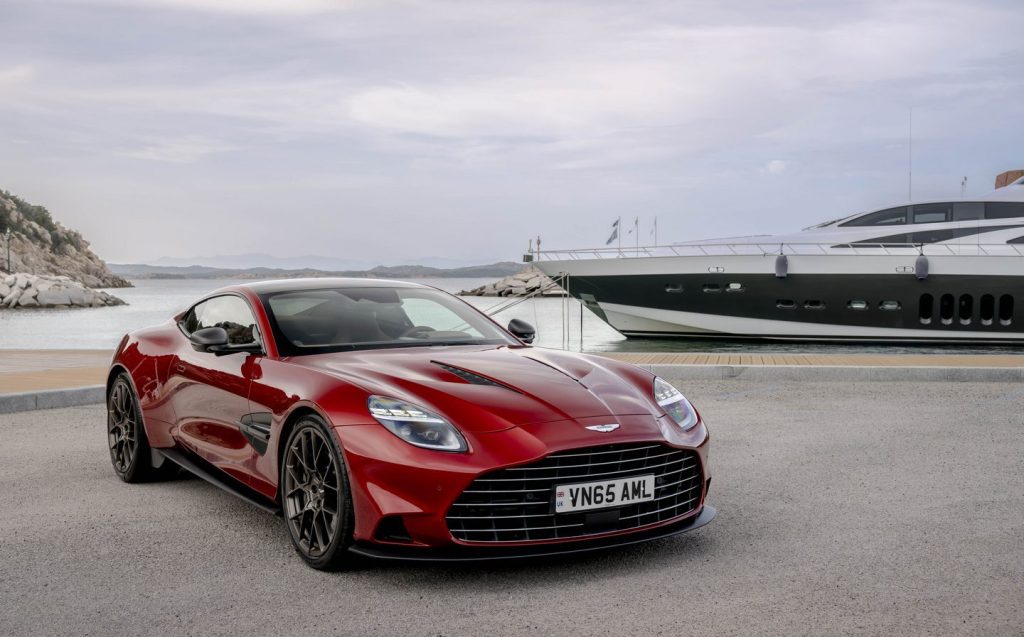
Anyway, this isn’t a movie review, it’s an assessment of the third outing of the Vanquish name. The previous generations were always the flagships of the Aston line, the ultimate iteration of the front-engined, rear-wheel-drive GT or sports car, powered by V12 engines.
The company’s more recent history, however, might cloud the new Vanquish’s place in the lineage, mainly because of the existence of the outrageous and short-lived £2.8m Valkyrie hypercar, or the incoming Valhalla mid-engined masterpiece due to land next year.
But, for now, the Vanquish is the ultimate road-going Aston Martin. And it is, surprisingly in this day and age, once again powered by a non-hybrid V12 engine.
And what an engine. It’s a 5.2-litre twin-turbo unit that the company says is all-new — the only things it carries over from the old V12 in the DBS 770 Ultimate are the dimensions of the cylinders, including bore (diameter), stroke (length) and vee-angle.
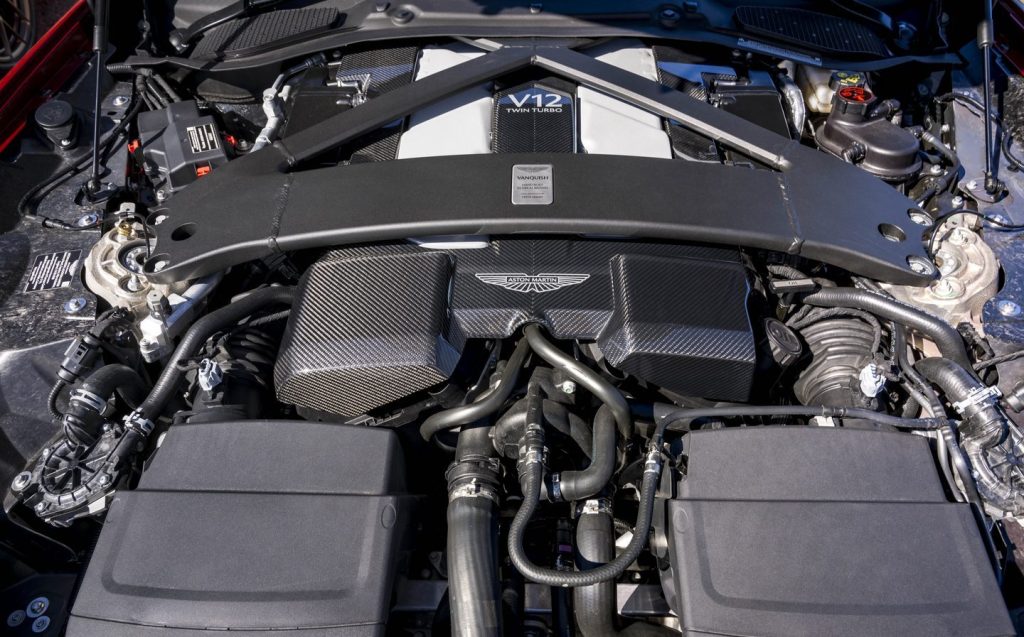
In terms of peak outputs, it produces a colossal 824bhp and 738lb ft. That first figure is enough to make it more than twice as powerful as the V8 Volante that Timothy Dalton drove in The Living Daylights.
This piece of military-grade hardware is installed into another body which is a testament to the superb work of Aston Martin’s design department, headed up by Marek Reichman — the man who styled, among other things, the Aston DB10, which was only ever seen onscreen in a Bond film in 2015’s Spectre.
The Vanquish is longer than either the DBS it replaces or, indeed, the DB12 with which it shares some of its bonded-aluminium underpinnings, and that increase in its physical stature gives it a long, low, lithe form that truly has to be seen up close to be fully appreciated.
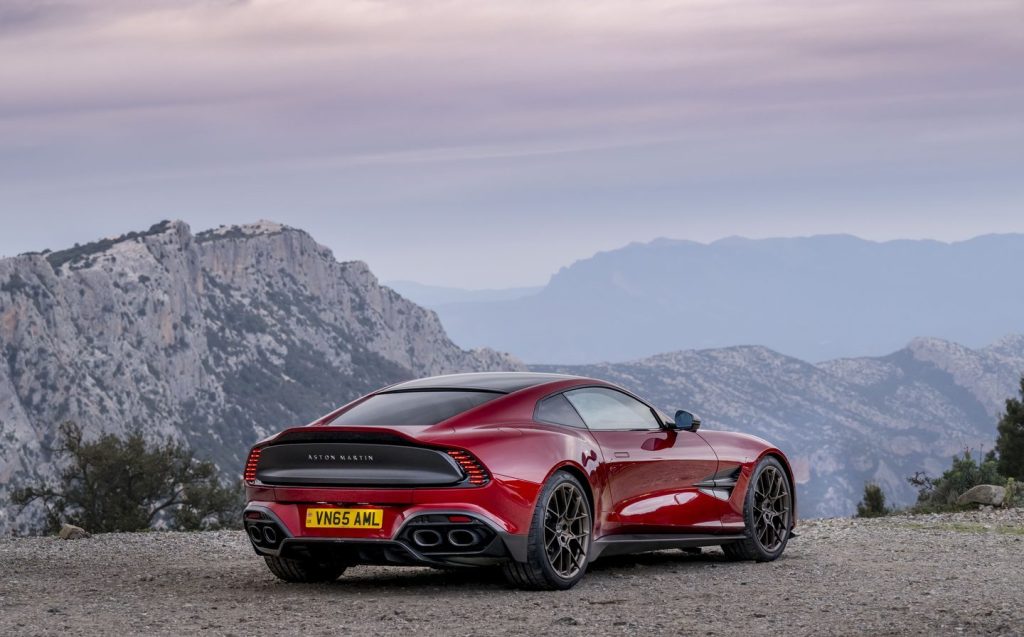
Hallmarks of the Vanquish include a much bigger radiator grille, to allow more cooling air to flow into the V12’s bay, and the “Shield”, a panel on the back of the car which looks like it is floating, surrounded by seven-bar LED light clusters.
The elegant exterior is matched by a classy interior, but here we have a few reservations. Such as, for instance, the fact that for such a big car, the Vanquish only has two seats. In place of the rears, there’s an array of stowage units and design flourishes, but it’s otherwise just a big bulkhead.
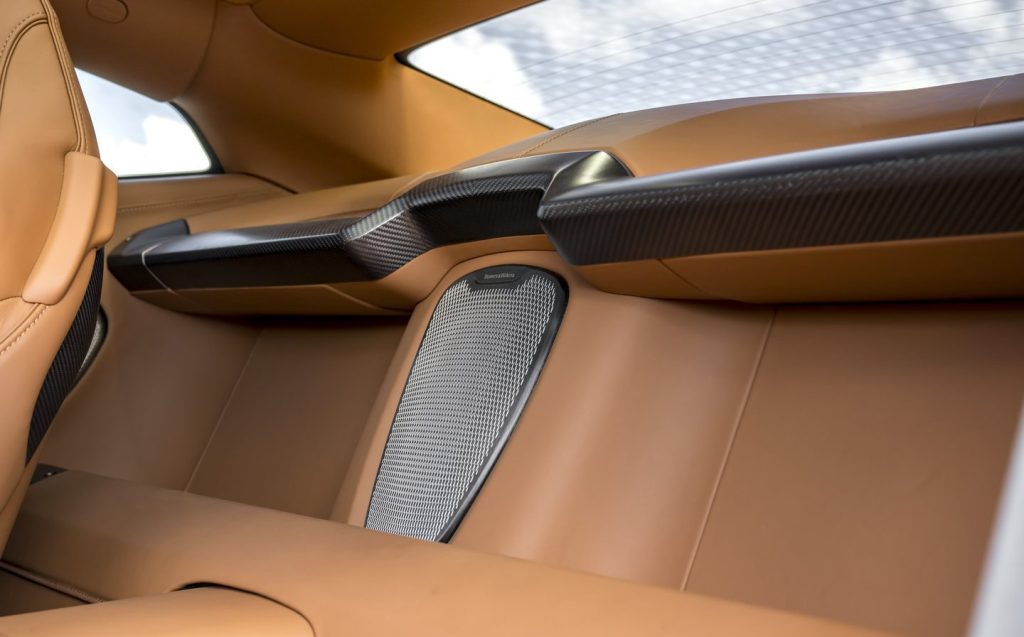
One could argue that most people never really use the back seats (when they are fitted) in a GT like this — often referred to as a “2+2” arrangement rather than a full four-seater — because they’re usually titchy, but it might have been nice to have the option in the Vanquish.
Also, the boot holds only 248 litres, which is basically smaller than what you’d find on a supermini like the Renault Clio. And it gets extremely hot in there, if our experience of retrieving our luggage after a spirited drive is anything to go by. Don’t put your Milk Tray in there.
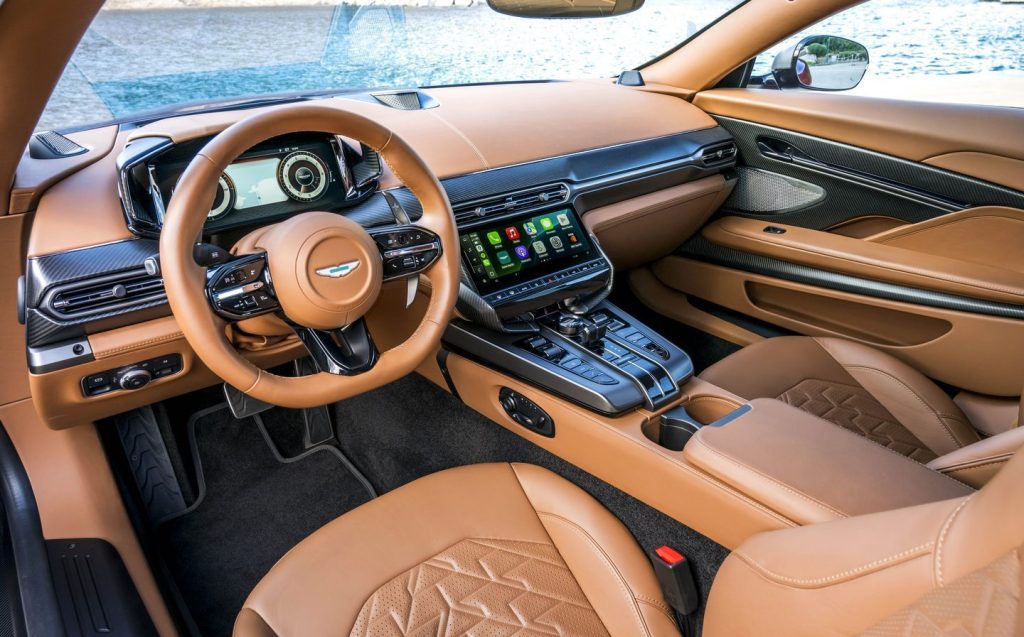
However, that’s not as big a deal as the rather staid design of the Aston’s interior.
Don’t misconstrue us, the leather used and the way surfaces are stitched, and the combination of materials employed are all pleasing. There are also some lovely flourishes, like the solid operation and metallic feel of the rotary switch for the drive modes, or the gorgeous paddle shifts on the steering wheel.
Also, Aston has really upped its game in terms of switchgear and its infotainment screens of late, no longer relying on Mercedes hand-me-downs for much of its human-machine interface.
But you still get the same column stalk in the Vanquish that you might find in a Merc C-Class, and while the 10.25in main touchscreen is graphically fine and reasonably quick to respond to inputs, it’s by no means resetting any parameters for in-car infotainment whatsoever.
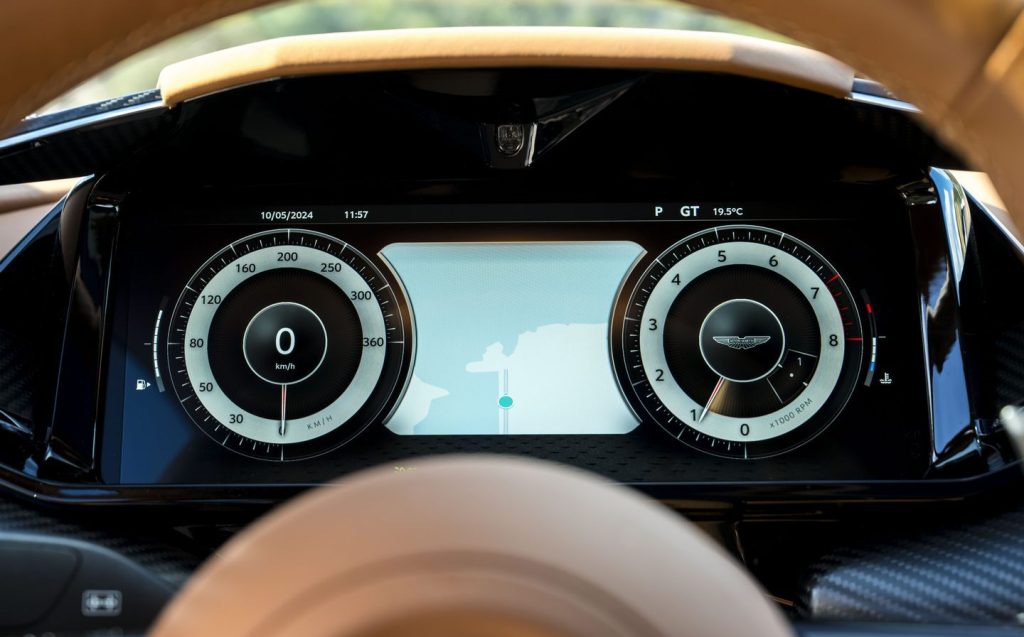
This wouldn’t be so bad, but an interior perhaps lacking for a degree of showmanship in an exalted area of the market where such a thing is commonplace might be more of a hindrance when you realise the Vanquish costs at least £330,000.
Even accepting what you get for that huge outlay, it’s an enormous number — especially when the DB12 is available for nearly half the price (from £185,000).
Nevertheless, back to that weapon of mass destruction under the Vanquish’s bonnet. It drives the rear wheels alone through an eight-speed transmission which is mounted on the back axle for better weight distribution.
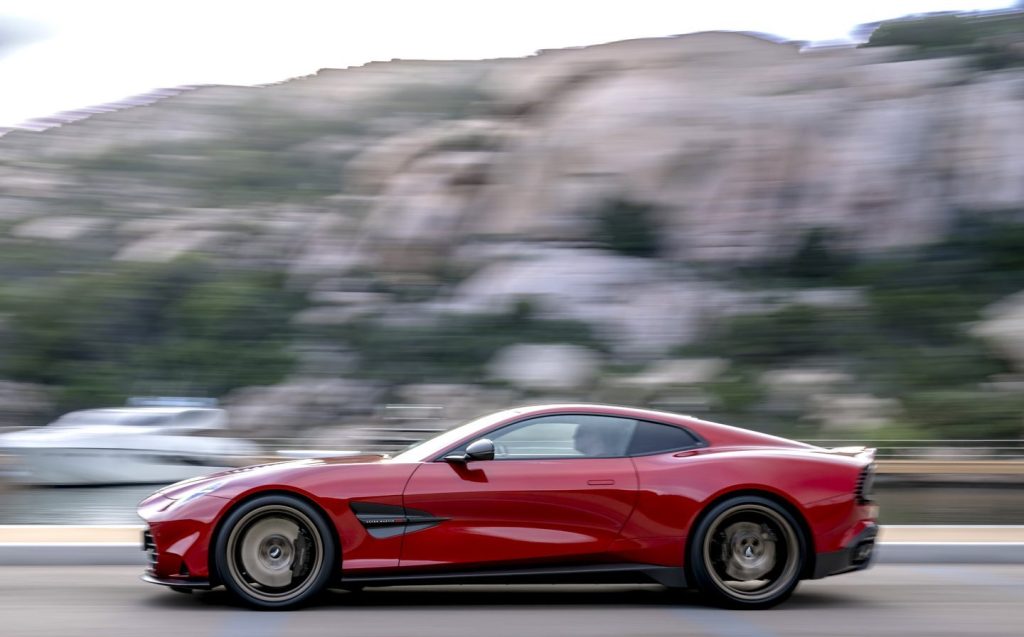
This means the svelte 1,774kg (that’s a dry weight, with no fluids or driver onboard) Aston balances its mass 51 per cent front, 49 per cent rear, which is almost perfect.
Beyond this, it has massive carbon-ceramic brakes to haul it back down from high speeds, Bilstein DTX dampers for a great blend of body control and ride comfort, sizeable 21in forged wheels with bespoke-compound Pirelli P Zero tyres fitted for grip, and an electronic limited-slip differential (e-LSD) at the back to apportion out its mammoth torque.
First impressions of the Vanquish on the move are good, but it’s at slow speeds where the car is at its least impressive. Mechanical isolation is generally exemplary, but the idea of GT mode — the Aston’s softest setting — is that it makes it more like, well, a GT (grand tourer) than a sports car.
Unfortunately, large, transverse ridges in the tarmac upset the Vanquish’s composure and thud through the superstructure, while its damping doesn’t feel appreciably softer than the car in its more focused set-ups. Presumably why Aston calls it a “super-GT” and not just a GT.
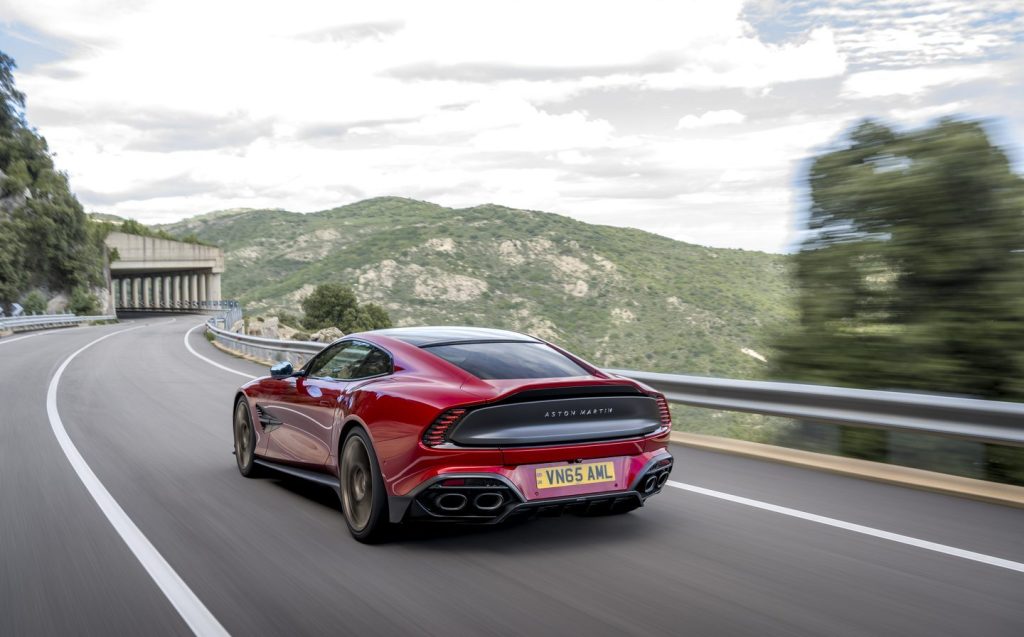
So there are very odd occasions where the Vanquish doesn’t seem to be smothering imperfections in the road quite as well as it might, or you discern a little more tyre noise than is strictly necessary, or even (and this might just be our ears playing tricks on us) hear something of a trim squeak coming from an obscure corner of the passenger compartment, where you begin to wonder if this Vanquish is going to be a disappointment… especially at 330 grand.
But all that pales into insignificance once you drive the Vanquish in Sport or Sport+ modes. Frankly, this is what the car should default to every time it starts up, not GT, because in those settings it is the best-driving Aston Martin we have ever encountered, and by some distance.
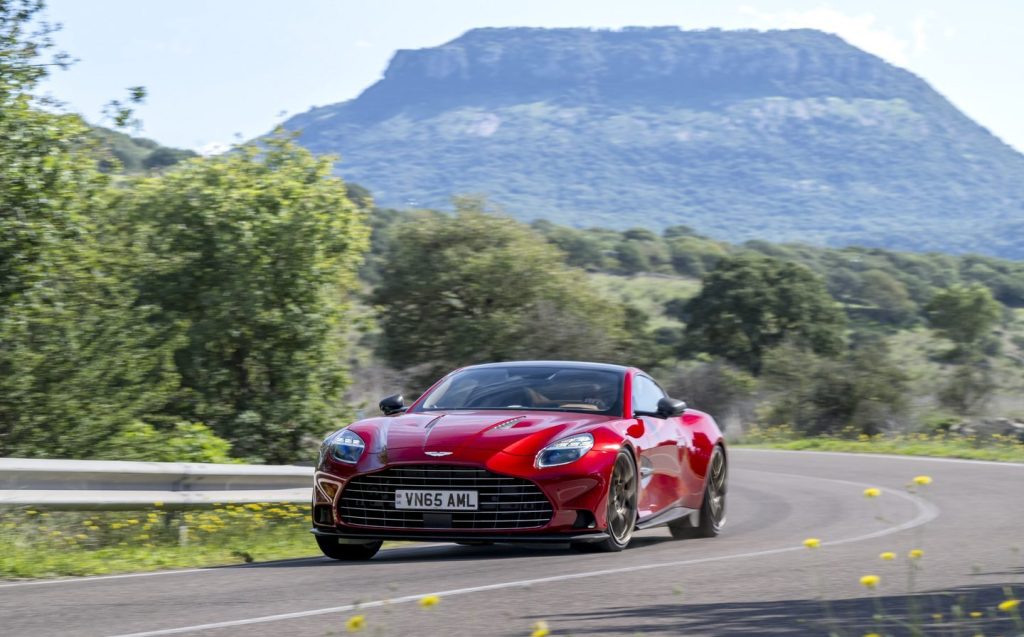
Admittedly, the ride is always firm-edged and a little noisy in Sport mode, yet in town it almost feels as if the better body and wheel control the Vanquish exhibits in this setting gives it a greater feeling of comfort.
Out on open roads, the Vanquish is truly flabbergasting. Genuinely, in terms of its weightier steering feel in Sport, plus a remarkably approachable and genial chassis that doesn’t require Bond levels of driver skill to get the best from it, the Vanquish is sublime to drive.
You can push it and cajole it through corners on the throttle without it ever once feeling either intimidating or, crucially, boring. It’s fun and involving, but not terrifying nor spiky. It is, in truth, a gem of a chassis that shows just how skilled Aston’s engineers have become at corralling all that power so successfully.
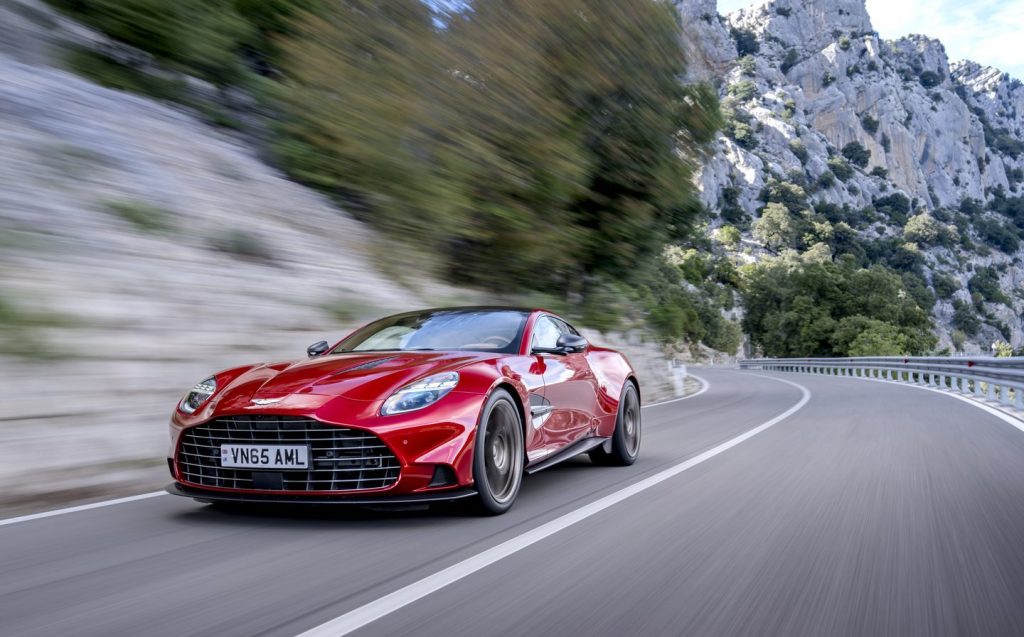
Because, believe us, the Vanquish is stupidly fast. Printed stats of 0-62mph in 3.3 seconds and a top speed of 214mph only partially hint at its sheer ferocity. Even in an era of mega-quick electric vehicles, the Aston Martin is gobsmacking if you fully open it up.
A huge part of that is the noise, which is theatrically brilliant. Turbocharged V12s can sometimes be quite muted and, in GT mode, so is the Vanquish’s unit, but the minute it’s in Sport you get the full voice of the car.
Rumbling and snorting around in the low revs, growling through the midrange and then taking on an almost motorsport-like shriek near the redline, it’s a glorious soundtrack that an EV just can’t replicate, so it’s wonderful that Aston has taken this one last opportunity to provide it for us before such noises are gone from new car showrooms forever. It’s almost worth the asking price of the car alone.
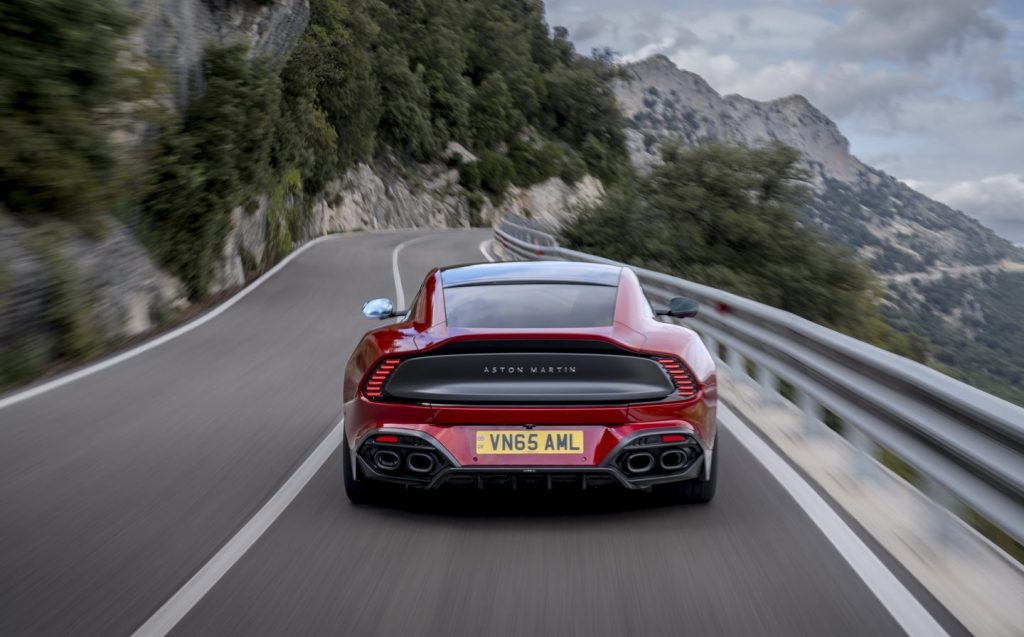
OK, so a twin-turbo V12 being rinsed out isn’t going to be the most economical of things (we saw 12.4mpg from the Vanquish after our test drive), but to the sorts of people who can afford to buy one of these things, the running costs are almost inconsequential.
In general, Aston Martin has absolutely aced the new Vanquish. It is incredibly fast, fantastic to drive, admirably comfortable and suitably easy on the eye, and while the interior might lack for a little Monte Carlo-like razzmatazz, it’s perfectly tasteful and well screwed-together within.
Rivals include some real heavy hitters, in the form of the Ferrari 12Cilindri, the Maserati GranTurismo (in its Folgore electric form, maybe) and the Bentley Continental GT. Frankly, it feels like the Vanquish has the chops to see off the lot of them.
It’s not flawless, of course, but then few cars ever are. And it’s by far and away the best Aston we’ve ever tried: a truly blinding performance car and just a magnificent thing to drive. And you don’t even have to be an MI6 agent wearing a DJ who’s fond of a Walther PPK to get the best from it, either.
Related articles
- If you found this review of the Aston Martin Vanquish interesting, you might like to read what Will Dron had to say about the DB12.
- Also check out the Aston Martin Valiant, a 734bhp track-focused sports car developed for Fernando Alonso
- And don’t miss this video of the Aston Martin Valkyrie AMR-LMH hypercar on track ahead of Le Mans 2025
Latest articles
- Lewis Hamilton wants to design a modern day Ferrari F40 with manual gearbox
- Dacia Bigster 2025 review: The ‘anti-premium’ family SUV that punches above its weight
- Your car’s worn tyres could be being burnt illegally in India, investigation reveals
- Open-top 214mph Aston Martin Vanquish Volante is world’s fastest blow-dry
- F1 2025 calendar and race reports: The new Formula One season as it happens
- Alfa Romeo Junior Ibrida 2025 review: Hybrid power adds an extra string to crossover’s bow
- Top 10 longest-range electric cars: all with over 400 miles per charge (officially)
- Renault 5 Turbo 3E ‘mini supercar’ confirmed with rear in-wheel motors producing 533bhp … and insane levels of torque
- British firm Longbow reveals ‘featherweight’ electric sports cars with 275-mile range


